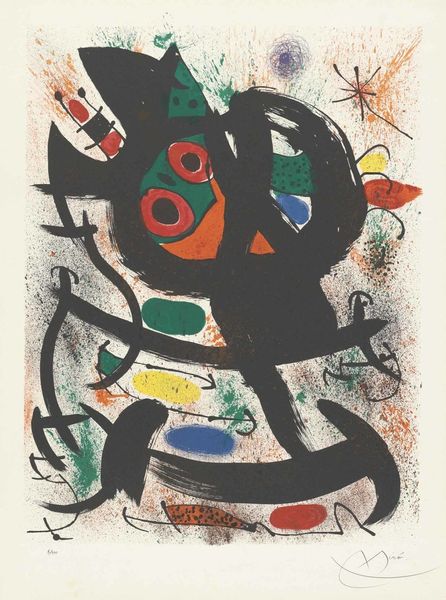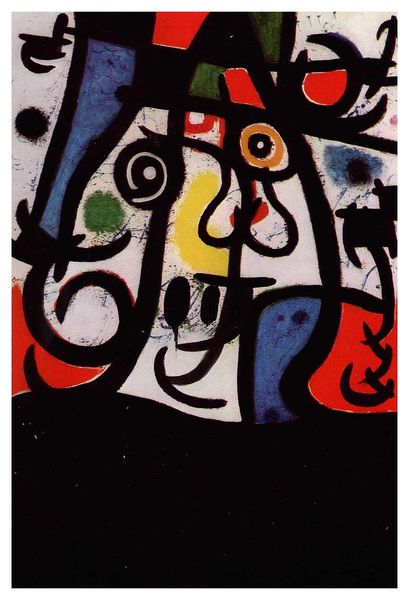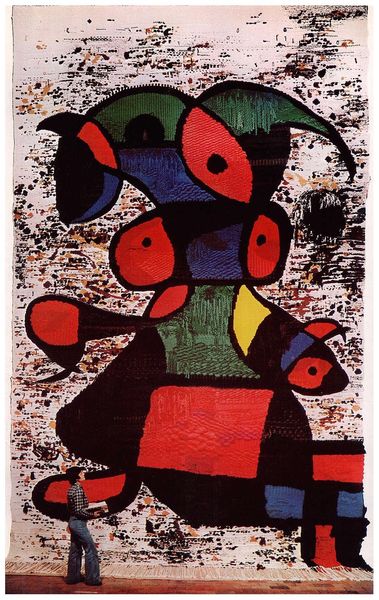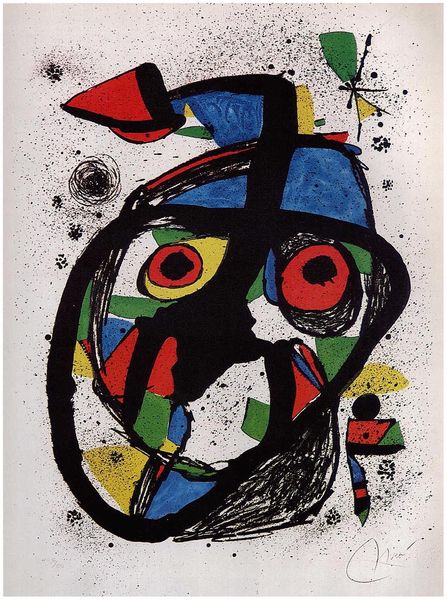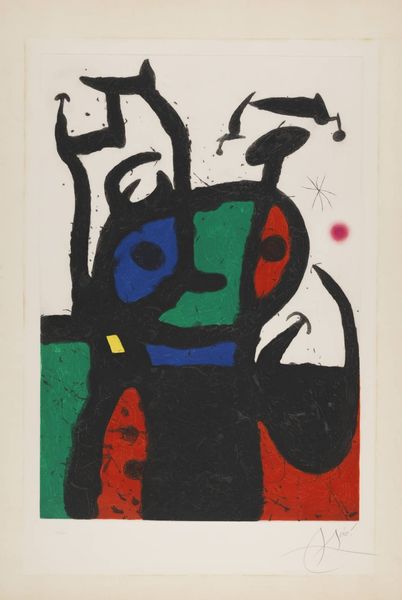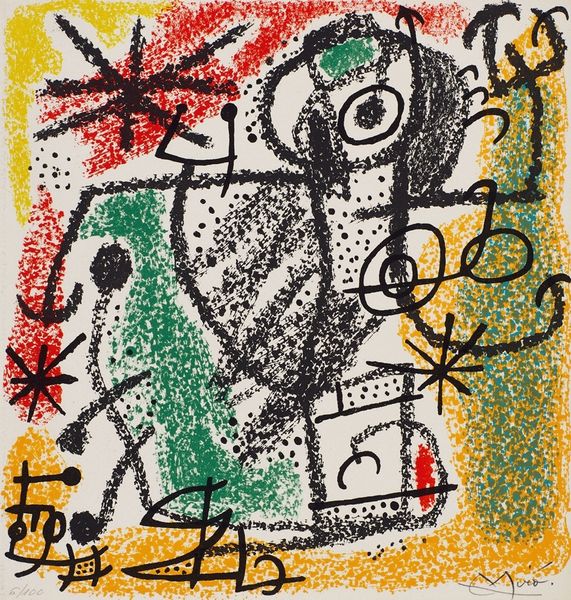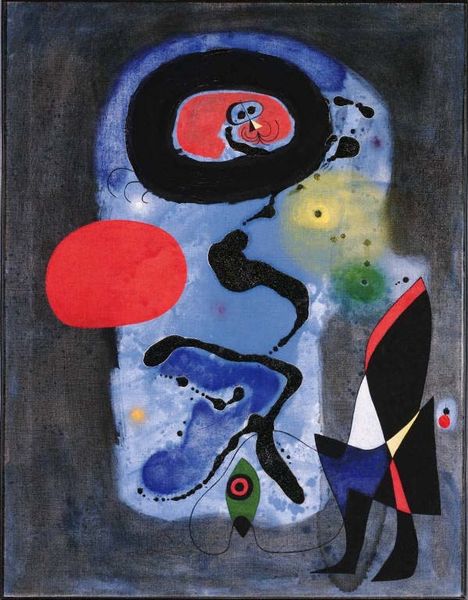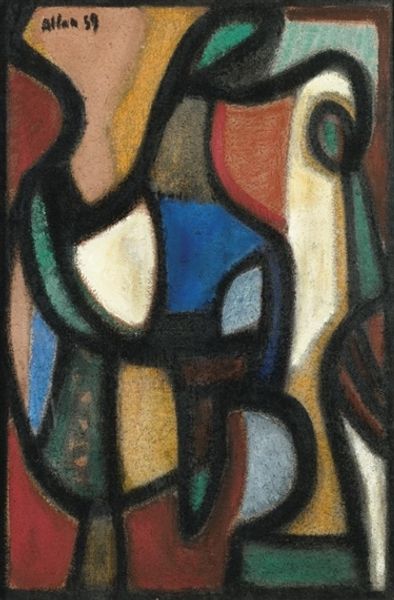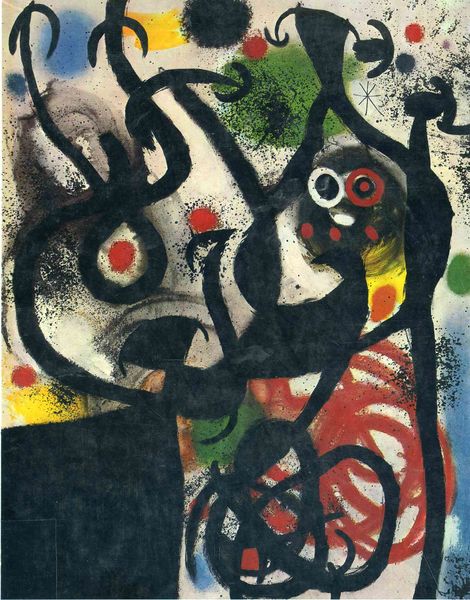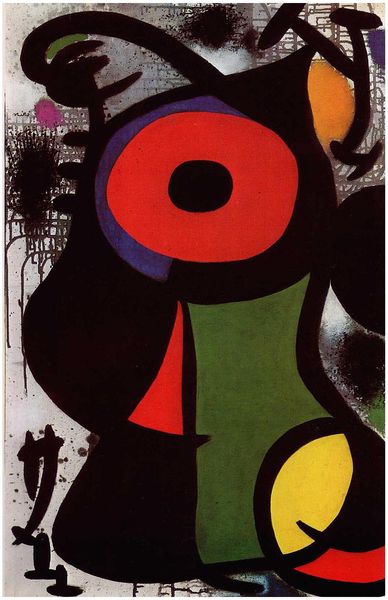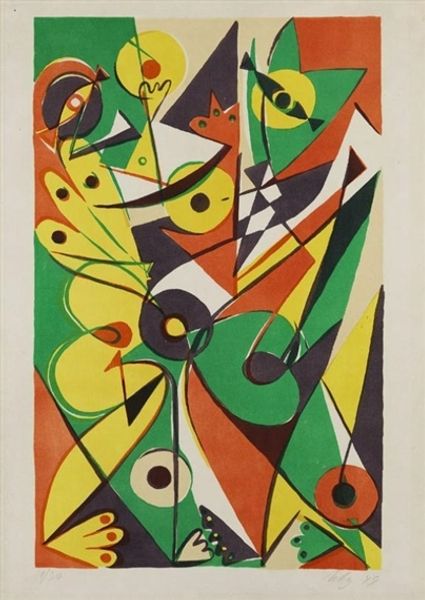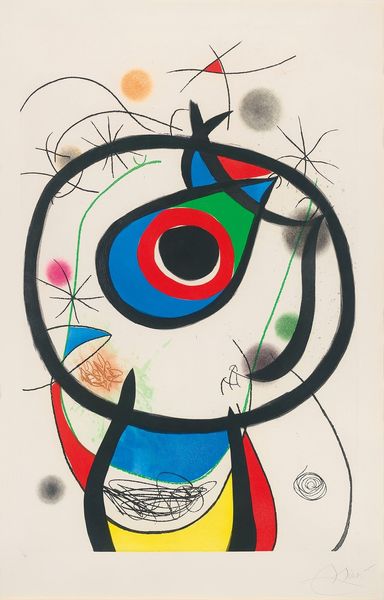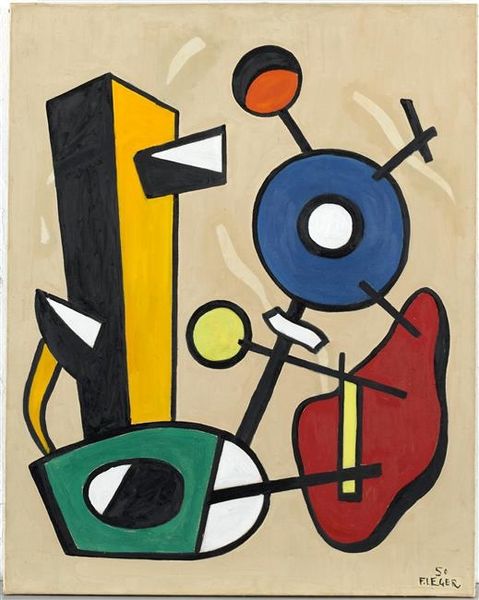
Dimensions: overall: 244.4 x 169.5 cm (96 1/4 x 66 3/4 in.)
Copyright: National Gallery of Art: CC0 1.0
Editor: So, here we have Joan Miró's "Woman," painted in 1976, using acrylic. It strikes me as incredibly playful, the way Miró uses those vibrant colors and basic geometric shapes. How would you approach this piece? Curator: Well, looking at "Woman" from a materialist perspective, I'm drawn to the act of its making. Think about the production of the acrylic paints themselves – the industrial processes, the pigments sourced and combined. These weren't readily available in the same way a century before, were they? And then consider Miró's application. What can the paint handling tell us about the artist's labor? Is it gestural, fast? Slow, labored? It seems spontaneous, maybe even impulsive, but of course that might belie the intensive work needed to achieve it. Editor: I hadn't really thought about the implications of using acrylic. What would this artwork be with other materials? Curator: Exactly! Its widespread use is inseparable from twentieth-century petrochemical industries. The "splatters" appear casual but contrast directly with the clearly defined flat planes of block color, a sort of democratisation of technique if you will, where all methods become acceptable and can happily co-exist in the artwork. Think too about the accessibility of these materials compared to more traditional art supplies; this brings the opportunity for creation to more artists. Does this work reinforce or challenge those notions? Editor: So you are talking about this idea of accessibility and what informs our appreciation of an artwork? Curator: Precisely. Its creation and our understanding are inextricably linked to available materials and labor, both then and now. And it is worth noticing that “Woman” could be criticising consumerism just as much as celebrating manufacturing. Editor: I never thought of Miró in relation to mass production before, but it totally changes how I see the painting. Thanks! Curator: Indeed. Examining "Woman" through the lens of material culture enriches our interpretation.
Comments
No comments
Be the first to comment and join the conversation on the ultimate creative platform.
